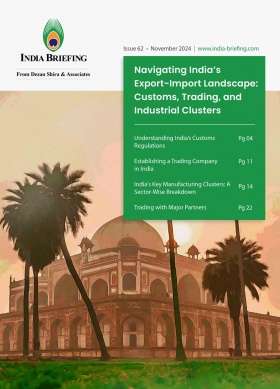GST 2.0: How India’s New HSN and SAC Code Structure Transforms Tax Compliance for Businesses
India’s revamped GST framework introduces a streamlined tax structure and updated HSN and SAC codes for product and service classification. Businesses must now prioritize system upgrades, precise code alignment, and strategic tax management to maintain compliance, maximize input tax credits, and enhance overall operational efficiency.
India’s Goods and Services Tax (GST) framework has entered a new phase of transformation with the rollout of GST 2.0, approved in September 2025. This marks one of the most critical overhauls of India’s indirect tax regime since its inception, focusing on simplifying tax rates and overhauling the Harmonized System of Nomenclature (HSN) and Service Accounting Codes (SAC)- two core classification systems of product and service.
For businesses, understanding these updates is crucial not just for compliance but also for strategic planning, accurate invoicing, and efficient supply chain management.
New reforms under GST 2.0
On September 20, 2025, the Union Minister of Commerce and Industry, Piyush Goyal, unveiled the Guidebook on Mapping of Harmonized System of Nomenclature (HSN) Codes, prepared by the Department for Promotion of Industry and Internal Trade (DPIIT). This comprehensive guidebook allocates 12,167 HSN codes across 31 Ministries and Departments, creating a unified reference point for classification.
By directly mapping products to responsible Ministries, the reform reduces ambiguity, eases compliance, and significantly improves India’s ease of doing business rankings.
Simplified GST structure: Revised HSN and SAC codes
The GST 2.0 framework consolidates tax rates into three primary slabs, i.e., 5 percent, 18 percent, and 40 percent. This rationalized rate structure impacts thousands of HSN codes for goods and SAC codes for services, creating a more transparent and predictable tax environment. This revision targets reduced compliance burden for businesses, lower taxes on essential and mass-consumption goods, and higher levies on luxury and non-essential categories.
|
Aspect |
HSN |
SAC |
|
Purpose |
Classification of goods under GST |
Classification of services under GST |
|
Source framework |
Based on the WCO’s Harmonized System (global model for goods) |
Adapted from the UN’s Central Product Classification (CPC) for services |
|
Code structure |
8 digits total |
6 digits total |
|
Applicability |
Mandatory for goods suppliers based on turnover threshold |
Mandatory for all taxable service providers, regardless of turnover |
These frameworks form the basis for accurate tax determination, reporting, and compliance under the new regime.
Why HSN and SAC codes matter under GST 2.0
The consolidation of GST rates requires all businesses to re-evaluate product and service classifications to ensure the correct application of tax rates and seamless Input Tax Credit (ITC) claims.
Accurate classification using HSN and SAC codes prevents invoice mismatches, tax disputes, and credit blockages. Conversely, incorrect mapping can attract penalties and compliance risks. Timely updates to enterprise systems are, therefore, essential for both legal and operational continuity.
HSN codes: Revised classifications for goods
Under GST 2.0, the Central Board of Indirect Taxes and Customs (CBIC) released updated HSN mappings in Annexure-I, reflecting rate revisions across various categories. Businesses must integrate these updates into their ERP, accounting, and invoicing systems to maintain compliance.
For instance, paneer, or cottage cheese (HSN 0406), previously taxed at 5 percent, is now fully exempt, underscoring India’s commitment to easing indirect tax burdens on essential food items. Similar reclassifications have been implemented across fast-moving consumer goods (FMCG), automotive, and consumer goods sectors, ensuring uniformity and clarity.
Because HSN codes are aligned with international standards, accurate classification also supports customs documentation and export declarations. Tax software such as Tally Prime, Busy, or Zoho Books can assist in comparing old and new HSN codes and identifying applicable rates.
Businesses should verify changes through official CBIC notifications or the GST portal’s HSN/SAC search tool (www.gst.gov.in → Services → User Services → Search HSN Code).
SAC codes: Simplified structure for services
Service classification under GST 2.0 has been streamlined through revised SAC codes, aligning with the new tax architecture.
Essential services such as life and health insurance, hotel accommodation, and financial intermediation now fall under lower or zero-rate slabs, enhancing affordability and simplifying compliance. Meanwhile, luxury services such as premium travel, gaming, and betting attract rates up to 40 percent.
Correct SAC coding is now mandatory for all taxable service providers, ensuring accurate invoicing, transparent reporting, and traceable transactions.
Compliance imperatives for businesses
The transition to GST 2.0 and the adoption of revised HSN/SAC codes demand immediate readiness. Businesses should:
- Update ERP and billing systems with revised classifications and rates.
- Review ITC claims and invoice templates to prevent mismatches.
- Train accounting and compliance teams on updated reporting formats.
Non-compliance can result in penalties up to INR 50,000 (US$563.09), audit disputes, or input tax credit denials. Beyond compliance, accurate classification strengthens operational efficiency and builds a foundation for long-term regulatory integrity.
HSN code application based on turnover
Under the GST regime, HSN reporting requirements are linked to annual turnover:
- Below INR 15 million (US$168,927): No HSN code required.
- Between INR 15 million and INR 50 million (US$563,091): a 2-digit HSN code is mandatory.
- Above INR 50 million: a 4-digit HSN code is mandatory.
- Importers and exporters: Must use 8-digit HSN code aligned with customs standards.
This tiered approach balances compliance requirements with business scale, ensuring uniformity without overburdening smaller enterprises.
Trade data and market intelligence
Specialized analytics providers offer HS code-based trade data that can be leveraged for market research and competitive analysis. Using these codes, businesses can track import and export transactions, access sample trade records, and identify trends by country of origin, quantity, and value.
Such intelligence helps enterprises align supply chains and pricing strategies with evolving trade patterns.
Oversight and amendments
India’s Directorate General of Foreign Trade (DGFT) oversees the periodic revision of ITC-HS (Indian Trade Classification based on Harmonized System) codes- adding new ones, removing obsolete entries, and updating descriptions in line with changing industrial and trade practices. This ensures continued alignment with international norms and domestic policy shifts.
Structure of ITC-HS schedules
India’s ITC-HS is divided into two schedules:
- Schedule I (Imports): Covers import rules, policies, and procedures across 21 sections and 98 chapters.
- Schedule II (Exports): Outlines export policies across 97 chapters.
The classification encompasses 21 sections, 99 chapters, 1,244 headings, and 5,224 subheadings, offering a detailed taxonomy for all tradable goods.
Global hierarchy of HS Codes:
- Chapter (first 2 digits): Broad product categories (99 chapters)
- Heading (next 2 digits): Narrower classifications (1,244 headings)
- Subheading (next 2 digits): Further detail (5,224 subheadings)
- National tariff codes (last 2–4 digits): Country-specific additions for customs
Example – HS Code 0106929900:
• 01 → Chapter
• 0106 → Heading
• 010692 → Subheading
• 01069299 → Regional tariff
• 0106929900 → National tariff
Global framework and India’s adoption of classification of goods and services
The Harmonized Commodity Description and Coding System (HS Code) is an internationally standardized nomenclature used for the classification of traded goods. It was introduced in 1983 and became fully operational by 1988, with more than 200 member countries adopting the system. The framework is administered by the World Customs Organization (WCO), headquartered in Brussels.
India adopted this system through the HSN or ITC-HS codes, integrating them into its customs procedures, trade policies, and GST framework. This harmonization ensures alignment with global trade systems and supports accurate data reporting, tariff administration, and policy consistency.
Outlook
As India transitions to a more data-driven and globally harmonized indirect tax system, businesses that proactively align their product and service classifications under GST 2.0 will enjoy greater regulatory clarity, reduced compliance risks, and enhanced operational efficiency.
The correct application of HSN and SAC codes is not just a statutory obligation but a strategic enabler for seamless compliance, improved transparency, and sustained business growth in India’s evolving tax landscape.
(US$1 = INR 88.79)
About Us
India Briefing is one of five regional publications under the Asia Briefing brand. It is supported by Dezan Shira & Associates, a pan-Asia, multi-disciplinary professional services firm that assists foreign investors throughout Asia, including through offices in Delhi, Mumbai, and Bengaluru in India. Dezan Shira & Associates also maintains offices or has alliance partners assisting foreign investors in China, Hong Kong SAR, Vietnam, Indonesia, Singapore, Malaysia, Mongolia, Dubai (UAE), Japan, South Korea, Nepal, The Philippines, Sri Lanka, Thailand, Italy, Germany, Bangladesh, Australia, United States, and United Kingdom and Ireland.
For a complimentary subscription to India Briefing’s content products, please click here. For support with establishing a business in India or for assistance in analyzing and entering markets, please contact the firm at india@dezshira.com or visit our website at www.dezshira.com.
- Previous Article Flipkart’s Dark Pattern Self-Audit: What it Means for Businesses in India
- Next Article India-UK Social Security Agreement: A Breakthrough for Indian Professionals and Employers








